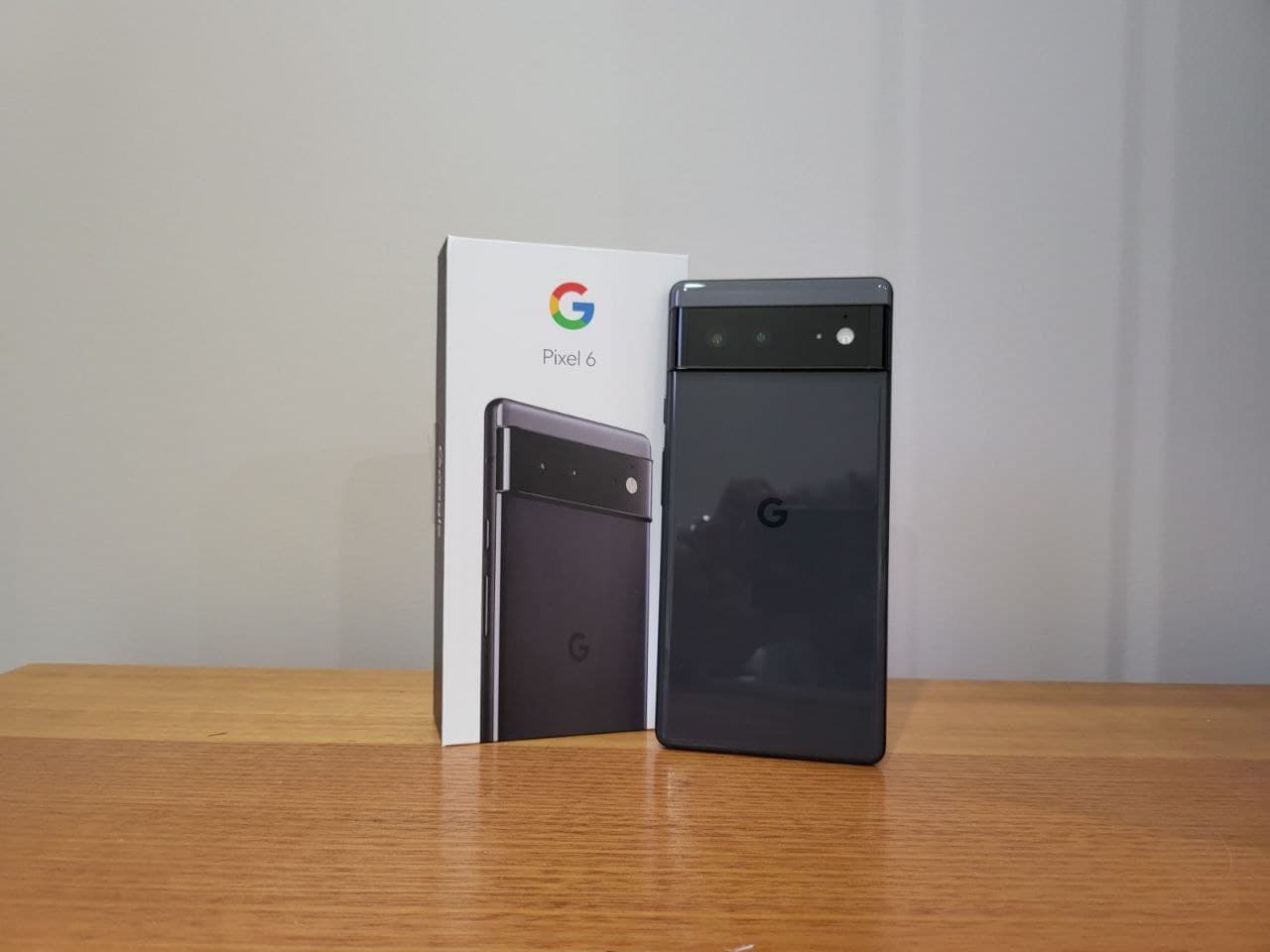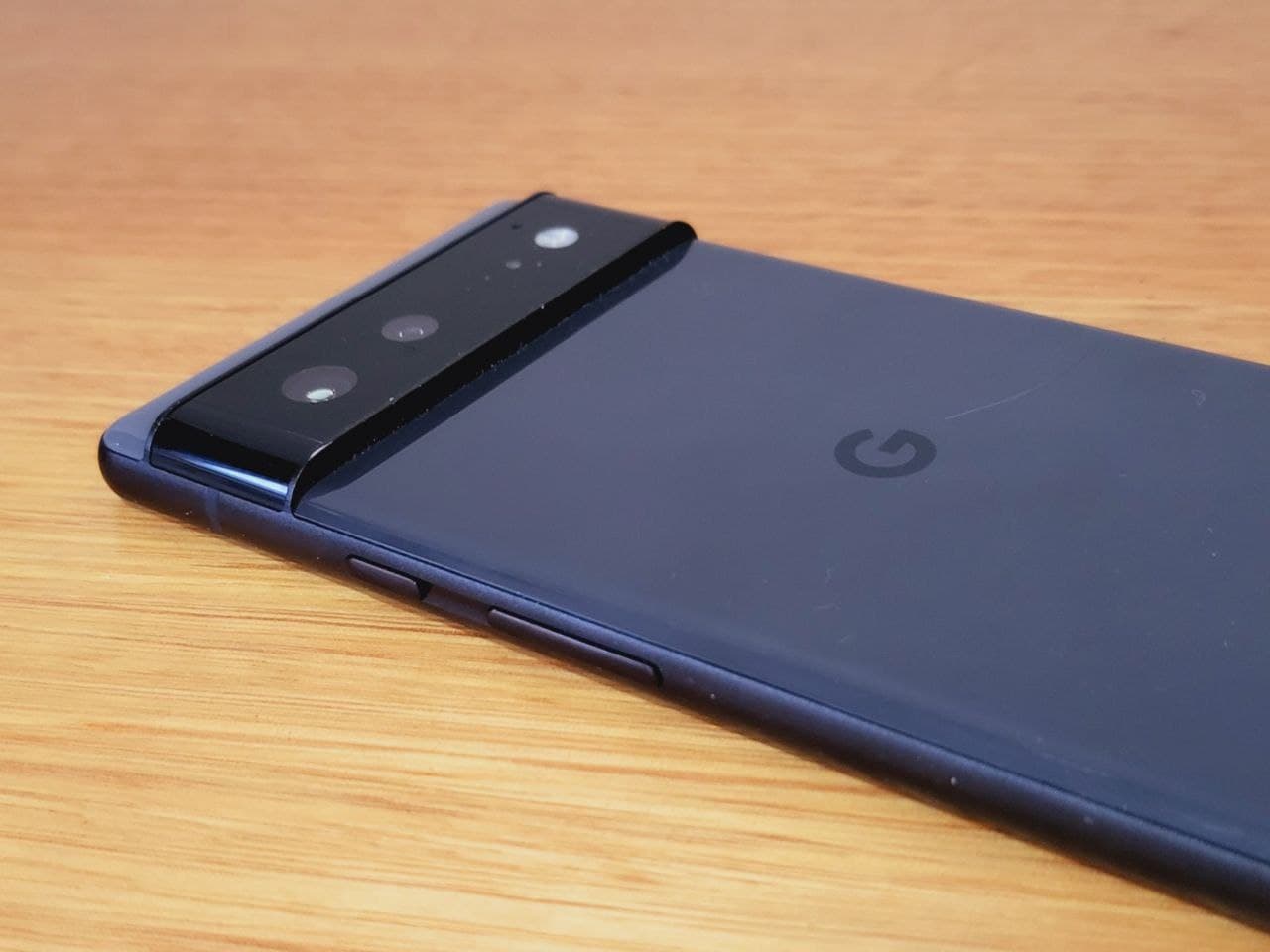The Google Pixel, the device that carries the annual mantel of “Google’s Phone” and “pure expression of Android”. The original Pixel burst onto the world stage and redefined smartphone photography, and what a clean and smooth Android experience could be.
Since then, subsequent Pixels have failed to reach that level of stature, that’s not to say they weren’t good, they just failed to grab attention. With the 2021 Google Pixel 6 family Google is clearly aiming at amazing, the Pixel 6 has been redesigned inside and out and is carrying all of Google’s hardware ambitions.
Google released two devices this year, the Pixel 6 and Pixel 6 Pro, this review will focus on the hardware of the Pixel 6. So does the Pixel 6 achieve Google’s aspirations? Is this the generational leap forward that Pixel needs? Read on to find out.
WHAT’S INSIDE?
This year Google has joined the minimalist packaging trend, the box itself is diminutive, skillfully hiding what is a sizable device inside. Thanks in no small part to the lack of earbuds or a power brick the packaging is certainly reduced over previous years.
Once you crack open the decidedly Google white cardboard box you’re immediately greeted by the 6.4” display covered by a protective adhesive barrier. Under the phone is a 1m USB C to USB C charging cable, a USB A to USB C transfer adapter, the quick start guide and a SIM tool, that’s it.
The phone itself has a somewhat divisive “Cyclops-esk” camera bump on the back, that houses a 50 MP f/1.9, 26mm wide angle camera, and a 12 MP f/2.2, 114˚ ultrawide camera, both supported by a Phase Detection Autofocus Laser Auto Focus system and a Dual-LED flash, more on those camera’s later.
Without a case, I have to agree that the camera bump is taller than I find comfortable, the long edges do catch your finger. One advantage of this camera bump is that when sitting on the desk the phone sits flat, unlike the typical asymmetrical camera bumps we typically see.
While we’re looking at the Pixel 6, case off, there is one other minor quibble we have. Google seems to have invented the world’s most slippery material, honestly, the Pixel 6 seems to repel all surfaces and objects. This has almost caused the device to run off the table onto the floor several times.
The great news is both of these quibbles have the same simple solution, what’s better it’s a solution I use for every device I use. It’s called a case. Slap the Pixel 6 in a case the bump goes away, the sharp edge can’t be felt and it stops treating every surface and object as an air hockey table.
The real Pixel story is inside the device. Inside the Pixel 6 is the Google Tensor, Google’s first mobile SOC. Built on a 5nm process the Tensor is an Octa-core processor comprising of 2 x 2.80 GHz Cortex-X1 cores, 2 x 2.25 GHz Cortex-A76 cores and 4 x 1.80 GHz Cortex-A55 cores, all supported by a Mali-G78 MP20 GPU and of course custom Google Tensor AI cores.
Google has put all of their chips (pun intended) in the Tensor basket, but has that paid off? In short, it certainly looks so. In our few weeks with the Pixel it hasn’t faltered once, the Pixel 6 delivers a buttery smooth, stutter and lag-free Android experience.
While it’s hard to attribute the smooth performance, Pixel only software feature and AI prowess to exclusively to the Tensor SOC what we can confirm is that Google’s control of the entire stack certainly seems to have revealed some strong benefits. Certainly, no red flags that we can see!
One huge benefit of Google supplying their own SOC is the 5 years of guaranteed Security and 3 years of Software updates. This is directly linked to Google controlling their own SOC and the long tail updates for drives to support it.
The Tensor is supported by an adequate 8GB of RAM and comes in either a 128 or 256 GB option. Overall in daily use, the device is currently unfaltering. As always the real test of any device is 6, 12, 18 months down the line, but Pixel 6 is off to a strong start.
| Pixel 6 | |
|---|---|
| Display | 6.4 inch FHD AMOLED 90Hz HDR10+ display |
| SOC | Google Tensor Octa Core (2 x 2.8 GHz, 2 x 2.25 GHz, 4 x 1.8 GHz) |
| RAM | 8GB |
| Storage | 128 GB or 256 GB |
| Cameras | Main: 50 MP f/1.9 26mm wide Ultrawide: 12 MP f/2.2 Dual LED Flash Omnidirectional Phase Detection AutoFocus Front Facing: 8MP f/2.0 |
| Battery | 4614 mAh |
| Charging | USB C Fast charging 30W (With USB PD) Qi fast charging 21W Reverse Qi charging |
| Wireless | WiFi 6e Blietooth 5.2 NFC GPS – A-GPS, GLONASS, GALILEO, QZSSS, BDS |
| Headphone Jack | Nope 🙁 |
| Audio | Stereo |
| Colours | Stormy Black, Kinda Cream, Sorta Seafoam |
Overall the Pixel 6 is a well-refined package. You may not like the design choices, but it is clear they are intentional. Personally, I like the design, even the cyclops bar is striking, and once in a case non-obtrusive. If Google was looking for a premium vehicle to carry their device aspirations forward, I would say they have achieved that.
Daily use
The most important thing about any device, in the end, is how it feels to use, and inside that, the most important feature of any smartphone is the camera. So how does the new camera stack up?
Camera
It’s important here to separate Google Photos from the Pixel Camera performance, we will be covering the software features later. Google has been criticized for using the same hardware sensor since the launch of the Pixel range.
As of the Pixel 6 that all changes with Google embracing new sensors, a double camera set up in the Pixel 6 and a triple in the Pixel 6 Pro. While the images are not resoundingly ‘better’ that is understandable, Pixel already led the pack when it came to sill photography, and with so much of Google’s photography prowess coming from computation photography, it makes sense that the improvement may not be huge.
That said I get reliably images almost every time I use the camera. The Pixel won’t make you a great photographer, but it will let you take the best photos you can. The camera is fast to load, fast to shoot and seems to have solved the lag issues with multiply shots.
The inclusion of an ultra-wide lens is a fantastic addition and certainly makes for a more useful device. I fully believe in the utility of dedicated cameras for Ultrawide and Telephoto, so it’s a nice addition. The lack of a dedicated zoom lens is obvious in zoom shots, the Pixel 6 Pro just outperform the 6 in that way.
If zoom is something you want, we’d recommend shelling out the few hundred extra and getting a Pixel 6 Pro, so would Google we’re sure.
Google has made a lot of noise about the improved AI support, more inclusive colour toning and overall improvements to their computational photography. Overall we see evidence that this seems to be the case. The real test will be getting this camera into a lot more hands.
The Pixel 6 gets a big thumbs up as far as the camera goes. As long as you don’t use or want a telephoto lens the Pixel 6 will deliver you reliable photos for years to come.
Performance
We’re not huge fans of benchmarks anymore, firstly they can be gamed, secondly and second, we just don’t care. What is important is what is it like to use. The answer? Smooth, very smooth.
Somewhere between Android 12, Google Tensor and the overall hardware Google has developed a smooth and cohesive device to use. It’s hard to know exactly where the feeling comes from, and I think that’s the point. Apple has always said it is the full control of the hardware, component and software stack that delivers great performance, the Pixel 6 suggested that is correct.
From a daily use perspective, taking photos, watching videos, surfing the web, crunching on some emails or playing a game the Pixel 6 provided a smooth and lag-free experience.
Battery Life
Battery life is one area where the Pixel 6 stands out. The inclusion of a 4614 mAh battery is a fantastic way to ensure great battery life, and perhaps the Google Tensor SOC is power efficient as well. All I can say is this sucker lasts.
I can routinely get through moderate days without a lot of gaming with 50% left in the tank. I have forgotten to charge the pixel twice, and both times it lasts from 530 am one day until 1030 PM the next. I do use Android Auto so it gets a small charge bump when I drive, but pandemic life does keep that driving to a minimum.
Even with larger gaming sessions, I can get through the whole day without having to charge on most occasions. If you’re expecting multi-day battery life and heavy use, I’d suggest you’re unreasonable. But if you have reasonable battery expectations the Pixel will out deliver.
Android 12
Alongside the Pixel 6 family Google also launched Android 12. Android 12 feels simultaneously like a natural progression of Material Design and somehow a complete refresh of the UI. In the end, I think it’s both, you can see the history and regression of Material Design, but this is a generation leap forward not a step.
We have to commend Google for actually delivering a cohesive UI across Android and their main apps. All of Android 12 feels like it got a refresh, from the Notification shade to the quick settings, through to the settings everything has been touched. The main Google apps have been updated and for the first time, I feel like I am always using Google’s new UI….. when I’m in their primary apps or Android UI.
It’s unreasonable to expect the 4th party developers to have Android 12’d their apps, some may never if it doesn’t suit their brand/ app identity. However, there are those darker corners of Google apps that always feel abandoned. The best example of this is Find My Device. I swear it hasn’t been updated in years, no biometric authentication, barely a Material layout.
This is where Google needs to focus, 100% of current apps from Google need to be consistent if they want to be taken seriously as an end to end hardware and software vendor. That’s what it takes to have a fully cohesive design, something only really apple has ever managed to achieve.
Overall we like the Android 12 UI tweaks, it feels fresh and easier to use. The larger quick toggles do take up more real estate, but they are also just easier to see and hit. The settings refresh in clean and the gesture and touch UI improvements do actually feel intuitive.
In Android 12, at least on the Pixel, I feel Google has delivered their best attempt at a cohesive UI and I like it. The refresh is meaning full and the under the hood improvement are appreciated. We will be covering some of Android 12/s and the Pixel 6’s more app focused updates in a subsequent combined review, stay tuned for Magic eraser, text to speech and a few more solid improvements to Android on the Pixel
Fingerprint Sensor
Remember the old adage, “you can’t have everything”? well, the Pixel 6 fingerprint sensor is here to remind you about that. This year Google has moved from a rear fingerprint sensor, still my favourite option, to an under-screen sensor. This is the same of all under-screen sensors in my experience, this certainly isn’t as bad as some I have tried.
I’d classify it as fine, it’s fine. It’s not as fast as a dedicated sensor and you can’t get your finger onto it as you remove your device from a pocket or bag to “pre” wake up the phone”, but it’s fine. It does have an annoying quibble, when you scan your finger if it doesn’t recognise your finger, or you miss the sensor then when you lift your finger it immediately pops up the num pad to enter your pin. You then either have to then type in your PIN, or swipe back.
It’s not a deal-breaker, but it does introduce needless frustration when it happens. A simple solution is to give you the option to stay on the fingerprint sensor after a failed fingerprint scan, at least for a few attempts, after 2 or 4 failed attempts a pin keyboard would be helpful. So Google I’d recommend you drop a settings update and ad an anti frustration option.
CONCLUSION
Overall Google has set out to provide a new flagship devices experience, bringing together for the first time their own SOC alongside a clean new Android 12 and great hardware design. The overall package works, and it makes me excited that Google may finally be getting their entire component, device and software strategy aligned.
If the Pixel 6 is this good, our expectations for the Pixel 7 are greatly increased. So, should you buy a Pixel 6? That’s both an easy and a hard answer.
I have no reservations in recommending the Pixel 6 as a device that is worth buying. If you want a telephoto lens then I’d highly recommend looking at the Pixel 6 Pro, the price jump isn’t that much and the additional lens may be worth it for you.
For the past few years, I have been recommending more affordable devices, like the Pixel A series, however, at a $999 starting point the Pixel 6 while slightly more expensive than the old A series is still relatively y affordable compared to the competition, and I think worth the extra money.
The pure Google software experience, 5 years of Security and 3 years of OS updates make this a very compelling device. If you can afford a $999 device I think the Pixel 6 will be the device to beat.
Disclosure Statement
Google has allowed Ausdroid to retain the Pixel 6 to test ongoing performance and software updates






















Great review Duncan, I nearly went for the Pixel 6 but as you recommended I’m glad I shelled out the extra money for the Pro version to get the 4x optical zoom. I’m not a big fan of the curved display but you hardly notice it with a good case on it. I’m loving the phone so far, the auto brightness needs improvement but the displays seem pretty bright outdoors. Glad you like the pixel this year too
Thanks Jamie, I’d certainly like together hands on time with the 6 pro